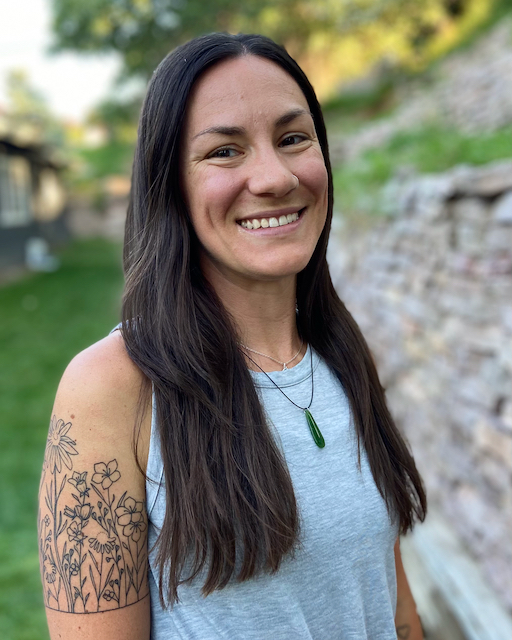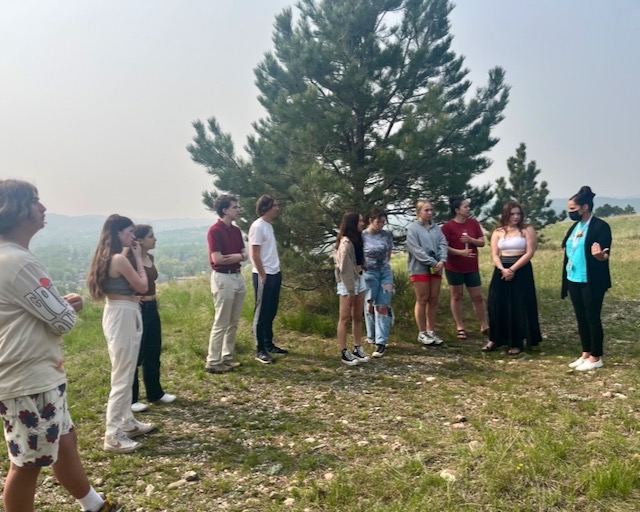Meet Our Teachers
Carrie Huber

Carrie Huber teaches Government and Advanced Placement US Government at Stevens High School in Rapid City, South Dakota. Now in her eighth year of teaching at the school, she is a James Madison Fellow for South Dakota and is pursuing her Master of Arts in American History and Government at Ashland University. Huber was named 2023 South Dakota History Teacher of the Year by the Gilder Lehrman Foundation. Huber spoke with us about MAHG, her teaching practice, and her series of lessons on on Native Americans’ civil rights.
Why I Chose the MAHG Program
After being awarded the Madison Fellowship, I looked for programs that offered some flexibility in scheduling as well as breadth in their curriculum. I was really interested in MAHG’s emphasis on both history and government. I talked with a colleague here at Stevens, Erik Iverson, our AP US History teacher. Students often take my class after taking his, so we coordinate what we teach. Erik is a 2006 James Madison fellow who studied in MAHG shortly after the program began. He spoke really highly of it.
I’ve completed only two courses in MAHG, but already I’m finding it very helpful in my teaching. The course I took over the summer, The American Founding, has provided lots of material for the unit on the Constitutional Convention I am teaching now.
How I Help Students Understand Our Local History
When I was nominated for the teaching award, I was asked to submit a lesson plan to demonstrate how I teach history and government. I submitted a group of five lessons I’d created to teach students about an issue very close to home for us: Native Americans’ civil rights. The high school where I teach sits on the site of a former boarding school for Native American children.

Our campus occupies a small portion of the 1200-acre working ranch that surrounded the boarding school. Students went to school in the morning and labored on the ranch in the afternoon. After the boarding school closed in 1933, the property was divided between the city of Rapid City, the school district and the National Guard, although the federal legislation that closed the school had allowed for some of the land to be given to “needy Indians.” There were many of them living in shantytowns around the city, descendants of families who had left one of two reservations about 90 or 100 miles away and traveled to Rapid City to live close to the school where their children had been taken. There were multiple requests to turn the land into housing for these Indian families, but the requests were ignored.
One portion of the old boarding school property, a parcel that is only a 10-minute walk from the Stevens school campus, remains federally owned. A group of volunteers in our community wondered why. They discovered a kind of simple concrete on the property that may have been used to seal over the unmarked graves of children who died at the school. A movement has grown to convert the site to a memorial to these children.
The Complicated History of Native Americans’ Civil Rights

When I teach this unit, I take my classes to visit the place where the memorial is to be built. It’s a pretty hillside, and it’s powerful to stand there with the students and think about the children who were taken from their families and never returned, because they died.
I’m not indigenous, but I care about making sure the public understands this story. I’m working with a group of volunteers in our community who are applying for grants to develop ways of sharing the history, in a grade-appropriate way, with children in elementary and middle schools. We all need to know about it. When the juniors and seniors I teach hear the story, they’re sometimes frustrated that no one before ever told them about it.
My Teaching Goals
The group of lessons I created use written and video resources explaining this history. Students examine documents establishing the tribal sovereignty of the Lakota, Dakota and Nakota tribes indigenous to North and South Dakota, Minnesota, Iowa and Nebraska. They watch videotaped interviews with tribal elders detailing the history of the boarding schools. They put this history into the broader context of Native American civil rights by exploring a National Park Service website on civil rights activism among Indians and a press release on a lawsuit filed against a hotel owner in Rapid City who allegedly denied service to Native Americans. They examine other documents explaining how the boarding school property in Rapid City was divided and given away. They discuss the conclusions they’ve drawn from all these sources in a Socratic seminar. There are options for students to enter the current public discussion of the boarding school legacy.
As a social studies teacher, I see myself teaching adolescents how to be human beings living in human society. They need to become self-reliant and self-supporting, but they also need to be able to craft an argument and analyze information. They need to build the bigger picture of the social and political world they live in.
